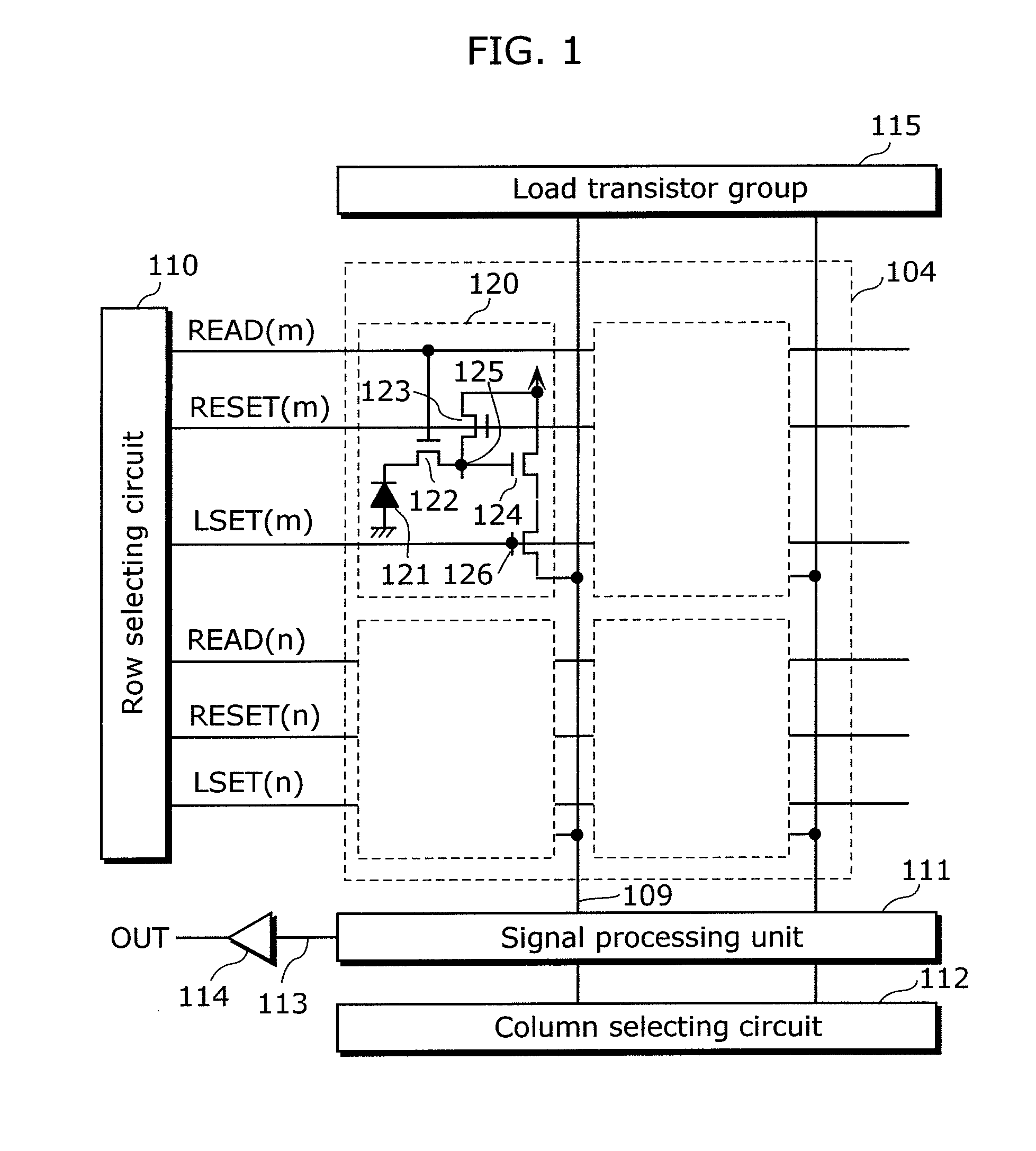Solid-state imaging device and camera using the same
a technology of solid-state imaging and camera, which is applied in the field can solve the problems of color-tone changes, such as the color-fading of pigments, deterioration of color separation functions, and increase the manufacturing cost of solid-state imaging devices, and achieves the effects of suppressing sensitivity decline, high wavelength sensitivity (color resolution), and high picture quality
- Summary
- Abstract
- Description
- Claims
- Application Information
AI Technical Summary
Benefits of technology
Problems solved by technology
Method used
Image
Examples
first embodiment
[0073]In the solid-state imaging device according to the present embodiment, a metal optical filter, which allows light of a desired wavelength to be transmitted, is formed above a photodiode (light-receiving element), such as a photodiode, which converts received light into an electric signal, and with an insulating film sandwiched in between the metal optical filter and the photodiode. This metal optical filter is an optical filter made of a metal thin film, and in the metal optical filter, plural apertures are periodically provided in a two-dimensional state. Note that the plural apertures may also be arrayed in a one-dimensional state.
[0074]Hereinafter, the behavior of the light with respect to the apertures provided in the metal thin film and periodically arrayed in a two-dimensional state shall be described focusing on a single aperture, and then shall be described focusing on plural apertures that are periodically arrayed. Note that the apertures in the metal thin film are re...
second embodiment
[0088]The solid-state imaging device according to the present embodiment is different from the solid-state imaging device in the first embodiment in that photodiodes are arrayed in a two-dimensional state and that a metal optical filter is provided in a two-dimensional state corresponding to each of the photodiodes. Specifically, the solid-state imaging device according to this embodiment is different in that a photodiode is provided with respect to each pixel which is the smallest unit constituting an image that is taken, that a metal optical filter is formed above each photodiode, and that an aperture is provided in the upper part of the pixel on a pixel-to-pixel basis.
[0089]By providing a metal optical filter above a photodiode for each pixel, it is possible to design spectral properties for the metal optical filter so that a different color signal can be obtained with each pixel. In a solid-state imaging device, such as a CCD solid-state imaging device and a MOS solid-state imag...
third embodiment
[0091]The solid-state imaging device according to the third embodiment of the present invention is different from the solid-state imaging device in the first or the second embodiment in that apertures are cylinder-shaped.
[0092]As described earlier, the waveguide cutoff wavelength λcutoff changes according to the shape of its aperture. In addition, the intra-waveguide wavelength λg differs in accordance with the polarization of light which enters through the aperture. Therefore, it is possible to prevent the cutoff wavelength λcutoff or the intra-waveguide wavelength λg from being dependent on the polarization direction by forming the apertures in a cylindrical or a column-like shape and making the cross-sectional structure of the apertures into a circular shape. As a result, an optical filter which has an equivalent filter function for every polarization direction can be realized.
[0093]In addition, the solid-state imaging device according to this embodiment is different from the sol...
PUM
 Login to View More
Login to View More Abstract
Description
Claims
Application Information
 Login to View More
Login to View More - R&D
- Intellectual Property
- Life Sciences
- Materials
- Tech Scout
- Unparalleled Data Quality
- Higher Quality Content
- 60% Fewer Hallucinations
Browse by: Latest US Patents, China's latest patents, Technical Efficacy Thesaurus, Application Domain, Technology Topic, Popular Technical Reports.
© 2025 PatSnap. All rights reserved.Legal|Privacy policy|Modern Slavery Act Transparency Statement|Sitemap|About US| Contact US: help@patsnap.com



